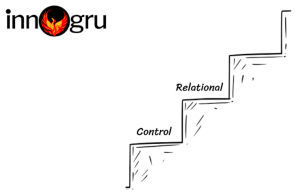In 2010, when Daniel Kahneman—Nobel laureate in behavioral economics—talked about human decision-making, he highlighted an essential psychological truth: people are often influenced more by stories and emotional experiences than by facts. Fast forward a decade, and the rise of social media influencers has proven just how powerful that truth is.
Today, influencers are playing a pivotal role in the movement towards sustainability. But how? What makes an influencer’s message more powerful than the barrage of statistics about climate change? Why do people listen when a favorite content creator preaches sustainability, while countless government reports fall on deaf ears?
Kahneman’s “System 1 Thinking” and the Power of Emotional Appeal
Kahneman’s research reveals that human decision-making largely operates in two systems: System 1, which is fast, emotional, and instinctive, and System 2, which is slower, more logical, and deliberate. Influencers tap into System 1 thinking by offering narratives that are easy to understand, relatable, and emotionally compelling.
For instance, when an influencer shares a personal story about transitioning to a zero-waste lifestyle or their struggles with reducing plastic consumption, it resonates on a human level. Followers feel the emotional weight of these stories, seeing sustainability not just as an abstract concept but as something they can adopt in their own lives. It feels doable!
Why Facts Alone Aren’t Enough
Here’s where things get interesting: we are bombarded with data about environmental destruction. From the rising temperatures to shrinking ice caps, the numbers are stark.
But statistics, by themselves, don’t drive action. Why? Because they don’t invoke emotional responses.
When influencers showcase sustainable choices—whether it’s promoting reusable bags, supporting ethical fashion, or advocating for plant-based diets—they bridge the gap between dry statistics and everyday action. They make sustainability cool and, more importantly, achievable.
The Long-Term Impact of Influencers
Unlike traditional marketing, influencer marketing thrives on trust. Followers look up to these individuals because they feel a personal connection. Over time, this trust becomes the foundation for significant behavioral shifts. An influencer’s recommendation to reduce waste or buy second-hand feels more like a suggestion from a friend than a command from an authority figure.
Take Greta Thunberg, for example. While she may not fit the traditional “influencer” mold, her emotional, impassioned speeches have galvanized millions worldwide. By appealing to people’s emotions—anger, guilt, hope—she has turned a once niche cause into a global movement. The same principle applies to influencers in smaller niches who advocate for sustainability.
Is It All Superficial?
Of course, some critics argue that influencers may sometimes promote sustainability for profit or to capitalize on trends. But at the heart of the influencer movement is a fundamental truth: they have the power to shift cultural norms. And as long as the messaging is consistent and authentic, the influence they exert can lead to long-term changes in consumer behavior.
Key Takeaway
Influencers, by appealing to emotions and simplifying complex sustainability topics, are uniquely positioned to inspire real, lasting change. They make sustainability feel personal, accessible, and, most importantly, actionable.





